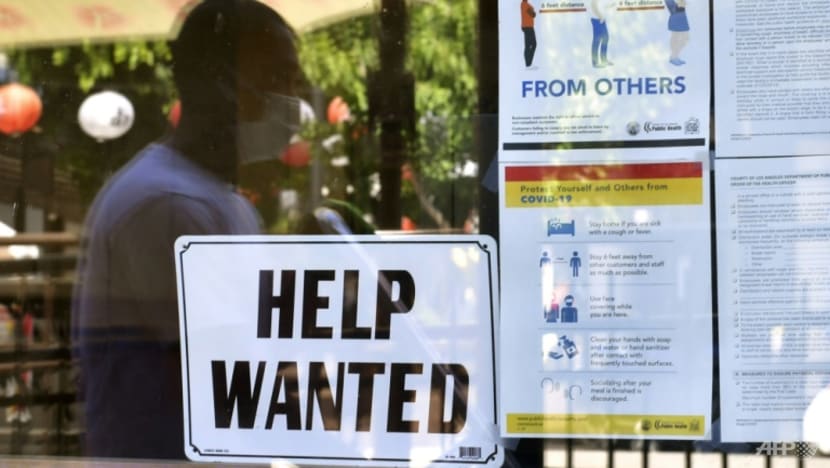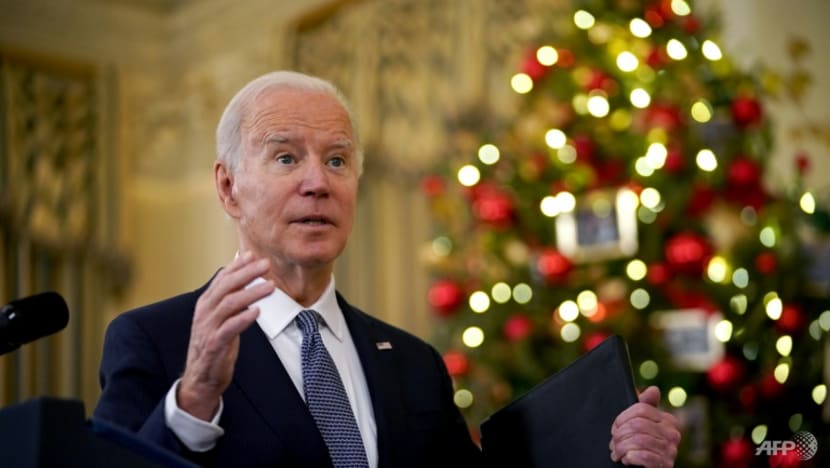US hiring disappoints in November, complicating Biden's plans


WASHINGTON: The United States added just 210,000 jobs last month, the government reported, less than half the increase analysts were expecting and adding to the headwinds facing President Joe Biden.
The White House has been banking on a solid economic recovery to bolster support for Biden and his massive Build Back Better spending bill that's inching its way through Congress, but the data released Friday presented a complicated picture of American workers' prospects as businesses recover from the COVID-19 pandemic.
The administration got good news in that the unemployment rate fell more than expected, with a four-tenth decline to 4.2 per cent, according to the Labor Department, while the country has gained an average of 550,000 jobs each month this year, even with November's undershoot.
But major sectors such as retail and leisure and hospitality saw underwhelming hiring, while businesses are again bracing for the spread of the COVID-19 Omicron variant, which could hamper the recovery, as the Delta wave did over the summer.
"At this point in the year, we're looking at the sharpest one-year decline in unemployment ever. Simply put, America is back to work," Biden said in a speech at the White House, where he called the improvement in employment "very strong."
Another threat to Biden's agenda has been inflation, which has surged across the world's largest economy this year and pushed the president to announce measures intended to cut into the price increases.
However, the government organ best equipped to fight inflation is the Federal Reserve, and while it is independent from the White House, economists believe the job report will spur it to more quickly roll back its stimulus and allow it to hike interest rates from zero earlier than expected.
"While this report is disappointing, it does not change our view that faster tapering will be announced in December, unless the scientific news on the Omicron variant over the next couple weeks is disastrous," said Ian Shepherdson of Pantheon Macroeconomics.
GAINING BACK GROUND
The economy remains short nearly four million jobs compared to where it was before the pandemic, but the data nonetheless contained signs of improvement.
The number of unemployed people dropped 542,000 to 6.9 million, the report said, but remains higher than the pre-pandemic level of 5.7 million.
The number of people on temporary layoff, which hit 18 million in April 2020 when the pandemic disruptions were at their worst, dropped to 801,000, about where it was before Covid-19 struck the economy.
Hiring last month may have been overall more robust than it appears. A Labor Department survey focused on households showed an overall gain in employment of more than 1.1 million from October.
The unemployment rate for most racial groups declined in November, though wide disparities remain.
Unemployment for Hispanics was at 5.2 percent and for Black Americans 6.7 percent, while for the white population, it was at 3.7 percent.
LACKLUSTER HIRING
A slight improvement was seen in the share of people employed or looking for a job, which has been stagnant in recent months as many Americans opted not to work.
It rose slightly to 61.8 per cent, its highest level since the pandemic, but was 1.5 percentage points below where it was before COVID-19.
"This is not (quite) a statistically significant increase; further gains are needed to establish a real change from the net flat trend since summer 2020," Shepherdson said.
Retailers are this year looking to make up for sales lost in the 2020 holiday season, when COVID-19 infections were rife, but employment in that sector declined by 20,000 last month.
Professional and business services added the most of any industry, at 90,000 jobs, while manufacturing and construction each added 31,000.
Average hourly earnings ticked up again to gain 4.8 per cent over the past 12 months, though that wasn't quite keeping pace with consumer price inflation, which hit 6.2 per cent annually in October.










